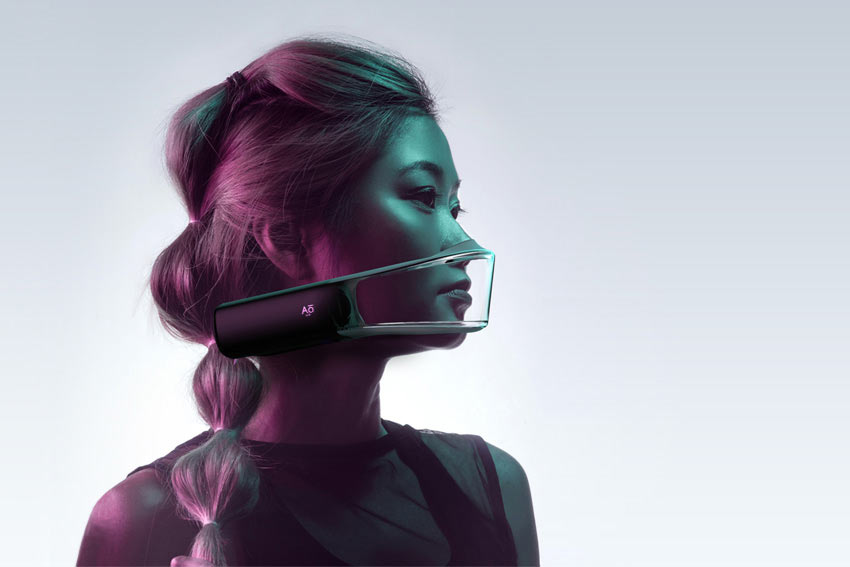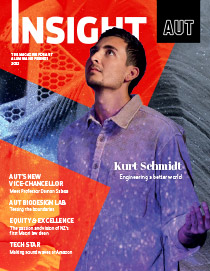AUT BioDesign Lab: Testing boundaries

Imagine a future where your long-term health is optimised using wearable technologies that measure the impact of that sixth coffee you drank, the last five months of late nights at the office, or that 20-minute jog you took this morning - a device that predicts impending chronic disease years before symptoms show up, giving you time to take preventative action.
While that may sound more like science fiction than science, it’s one of the many trailblazing projects in the pipeline at the AUT BioDesign Lab, a transdisciplinary collaboration of engineers, designers, physiologists, neuroscientists and clinicians who all share a common goal – to find workable solutions to real-life problems.
Described by co-director Dr David White as “the waterhole where all the different animals from across the savannah come to drink”, the lab is a meeting place of great minds from across the University, and the birthplace of a tonne of brilliant ideas.
“Our focus on engaging in original and challenging research has resulted in the lab undertaking worldleading research on many fronts,” says David (aka ‘Dr Nose’ due to his pioneering work around the benefits of nasal breathing).
“We’ve developed and patented two new breathing technologies, RACer and Kazoo-NO, that treat conditions like nasal allergies, airway obstruction and sleep apnoea. We’re leading ground-breaking research into the management of metabolic diseases such as obesity and type-2 diabetes, and we’re spearheading investigations into how breathing modification can influence airway health without the need for pharmacological intervention.”
The Kazoo-NO device enables users to hum at a specific frequency while nasal breathing and was inspired by the ancient practice of Bhramari Pranayama (which translates to ‘bumblebee breath’ because it’s at the same sound frequency bumblebees make when flying).
Meanwhile, the lab’s most successful project is its RACer (Rest-Activity- Cycler) pressurised breathing system, which has not only brought big benefits to those suffering from sleep apnoea and pulmonary disease but has also shown potential for treating brain injury, disease and age-related neurological decline.
And, as part of the lab’s ethos of supporting innovation – where commercialisation enables society to directly benefit from their research – they’ve launched a start-up company to take this technology to market.
Breathing neurotherapy is an exciting area for the team, which has undertaken extensive research into how different forms of regulated nasal breathing can be used to boost health and wellbeing.
“Our objective is to develop augmented breathing technologies as clinical support tools for neurological and psychiatric conditions like depression, anxiety, pain management and traumatic brain injury.”
Their work also heralds good news for the 70,000 New Zealanders who suffer from dementia, with the lab currently investigating new strategies to improve the cognitive performance of those living with the condition.
“In 2020, we completed our first brain activity EEG study looking at neural signatures of breathing. The results are exciting! Our technology demonstrates a change in both locations of the brain and states of activity during different breathing parameters. Eventually we hope to gain external research funding targeting specific applications for this novel neurological treatment.”
But securing funding is an ongoing challenge. “That’s because our proposed activities are often outside the scope of current thinking. But our view is that new solutions are derived from original research. Some might consider this risky as it challenges long-standing beliefs, however we prefer to think of this as being brave since new ideas come from new ways of thinking.”
Since its launch in 2013, the AUT BioDesign Lab has grown rapidly – the initial team of three has now swelled to include 12 AUT researchers, nine doctoral and master’s degree students, and more than 10 external research partners. Fellow Co-director Dr Catherine Crofts (Health and Environmental Sciences faculty) represents the clinical perspective while David (School of Engineering, Computer and Mathematical Sciences) provides technology and design resources and strategy.
An enthusiastic supporter of industry innovation, the lab works closely with several medical device and technology-based companies, helping them develop early-stage concepts.
In 2017, Aō-Air engaged the lab to help create a safe air citadel within a transparent facemask system. AUT Master of Engineering student Bradley Nixon played a key role in the project. Meanwhile in 2019, Master of Engineering student Michael Van Wyk worked with Zero-Cast to embed smart technology into their wrist orthotic brace, eliminating the need for plaster casts.
But not all BioDesign Lab projects revolve around humans. They’re also leading the world in marine turtle conservation through their development of the world’s first implantable front fin prosthetic and new types of artificial muscle.
“Sea turtles are among the planet’s most endangered species due to limb amputations from human hazards like fixed fishing nets. Although several attempts to replace lost flippers have previously been made, none were based on an implantable solution inspired by hip and knee prosthetics currently used in humans.”
None, that is, until Dr Lorenzo Garcia joined AUT in 2016 and offered the project to undergraduate engineering students in their final year. Thanks to their efforts, implant design has taken a giant leap forward gaining strong interest from turtle rehabilitation and rescue centres worldwide.
And as David explains, the consequences of these international collaborations are far-reaching. “This research initiative seeks to not only increase the chances of turtle survival, but it also strives to educate humanity about the importance of the survival of all life on earth.”
Now that’s transformational stuff!
Image courtesy of Aō Air
Read more inspiring stories
This story was originally published in Insight, the magazine for AUT alumni and friends. Read the most recent issue of Insight for more stories of groundbreaking research and great AUT graduates who are making a difference around the world.
